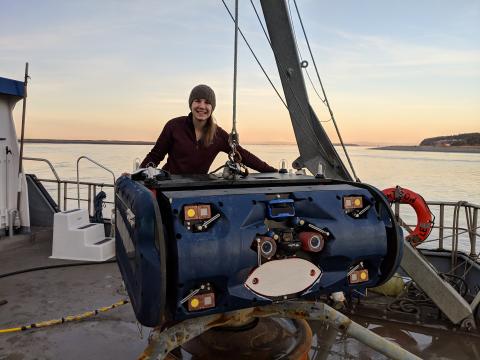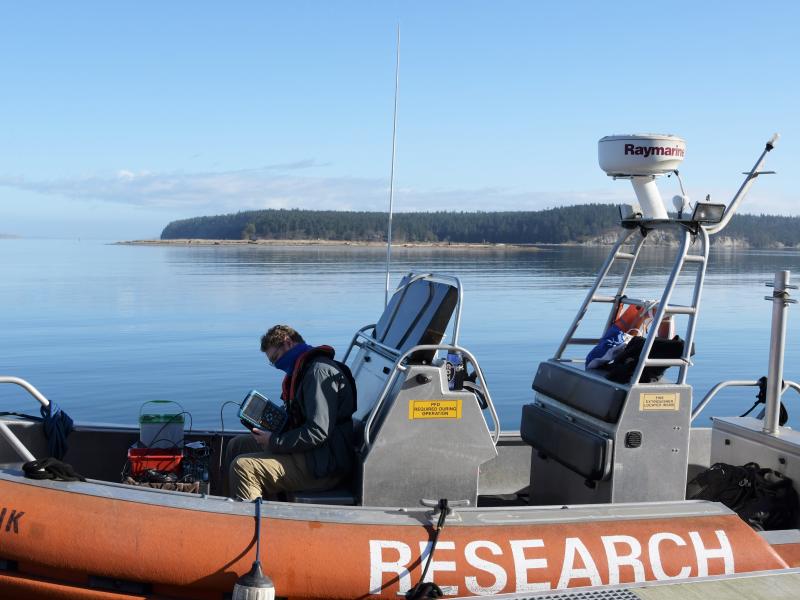
University of Washington’s 3rd Generation Adaptable Monitoring Package (3G-AMP)

Following initial testing of the second-generation Adaptable Monitoring Package (2G-AMP), researchers at PNNL-Sequim supported testing and development of the third-generation version of the system (3G-AMP). The latest iteration is designed to enhance software and processing and increase the system’s adaptability to a range of marine renewable energy projects. In addition, the third generation includes new sensors and the ability to change their tilt.
The AMP already has the capability to trigger multiple sensors based on certain stimuli—evidence they truly work as an integrated package. Its specialized hardware allows sensors to monitor many aspects of marine energy systems. The current effort is taking the technology to the next level, with a classifier that can detect, track, and classify marine life in real-time.
Ultimately, the focus of the 3G phase of the project is to target observations on the events of greatest importance for understanding environmental risk associated with marine energy systems. When deployed for months at a time, there is an increased opportunity for rare events, such as fish collision or interactions with marine mammals to be captured by the AMP. In 2019, the device was improved to be more hydrodynamic, compact, and equipped with tilting instrument heads, as well as to have the ability to operate multiple sonars simultaneously without interference. This upgraded device was successfully deployed for four months in the most energetic location of the Sequim Bay channel and helped to support a fish mesocosm study being conducted at PNNL-Sequim to quantify fish behavior around marine energy devices. Over that four-month period, the device’s operational uptime was 97 percent. Triton’s partnership enabled field deployments that have been crucial for improving the hardware and making sure the AMP can stand up to harsh marine conditions at higher-energy sites.

Since testing in Sequim Bay, the technology has been used in different environmental conditions and settings and integrated into marine energy devices where the energy harnessed by the device powers the sensor package. With the support of multiple funding awards, the AMP has been integrated with the Fred. Olson Lifesaver, deployed at the U.S. Navy Hawai'i Wave Energy Test Site, and an autonomous version of the instrument has been put to the test at PacWave. Triton will support the AMP's next phase, where the system is being integrated into the Oscilla Power Inc.'s Triton-C wave energy converter and will monitor a several-month demonstration at the Hawai'i Wave Energy Test Site.
FOA project DE-EE0007827
